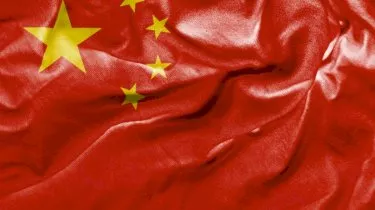Invest
The China outlook: Where the opportunities lie in 2019
Despite concerns that the Chinese market’s record bull run may be coming to an end on the back of poor US/China relations and industry slowdown, investors should remain positive as China’s government moves to provide stimulus to the domestic economy.
The China outlook: Where the opportunities lie in 2019
Despite concerns that the Chinese market’s record bull run may be coming to an end on the back of poor US/China relations and industry slowdown, investors should remain positive as China’s government moves to provide stimulus to the domestic economy.

According to Fidelity International’s China-focused portfolio managers, there will be a number and risks and opportunities facing investors in 2019.
According to Raymond Ma, portfolio manager for the China consumer sector, while US trade tensions will take their toll on the equity markets, the Chinese government is expected to respond with measures to support internal fiscal growth.
“Chinese equity markets are expected to remain volatile in the near term, due to concerns around escalating trade tensions between the US and China, a depreciating renminbi and a potential slowdown in the Chinese economy,” he said.
“Given the rise in trade tariffs, Chinese corporates are expected to witness a decline in exports, and a reduction in earnings and capital outflows, as some companies consider shifting their production base outside China.

“The good news is that the Chinese government is likely to introduce more fiscal and monetary loosening policies to support the domestic economy and consumer sector. As a result, money supply and liquidity conditions should improve going forward.
Mr Ma said the fixed asset investment is expected to continue in growth, while reforms will give encourage production productivity.
“We could also see an acceleration in fixed asset investment growth, while consumption growth is expected to remain relatively resilient. Ongoing supply-side reforms are also likely to boost China’s production efficiency and improve corporate earnings.
“With the recent correction in equities, market valuations have fallen. Consequently, we may see a window of opportunity in the next two to three quarters as some resolution is reached on the trade war,” he concluded.
Jing Ning, China portfolio manager at Fidelity International, agrees adding that the current low-growth environment is likely to stabilise the economy moving forward.
“China has entered a relatively low-growth phase of economic activity, compared to a decade ago. This has positive implications: the economy is likely to be less cyclical, and structurally driven by consumption, rather than fixed asset investment,” she said.
“Chinese corporate balance sheets have significantly improved and companies are more conscious about capital expenditure, while managements are adopting a more mature approach towards efficient capital allocation and reducing leverage. In a distinct shift towards increasing shareholder value, dividend payouts are also garnering attention, which markets have so far under-recognised.
She said despite trade tensions continuing to be a concern, Chinese corporates remain innovative and an increasing workforce may see growth in key growth areas such as technology and automation.
“The external trade-related matters reflect the emergence of a new age in Sino-US relationships, where there is likely to be less emphasis on co-operation. Nonetheless, the momentum of innovation at Chinese corporates is quite positive, which provides thrust to its extensive integration in global manufacturing value chains,” she said.
“China also has substantial human capital in its universities and vocational schools, which it can potentially monetise over the next decade in areas such as automation, health care, media and technology.
“As China faces external uncertainty, it will respond with measures to stimulate internal growth. Chinese policymakers have a clear intention to support economic activity, which they have demonstrated on several occasions in 2018. The series of Reserve Requirement Ratio cuts seen during the year is one such manifestation of this intent. While the impact of additional liquidity will be felt with a lag in the economy, it confirms that policymakers will be proactive,” she concluded.

Stock market
Institutional investors increase stock allocations to 18-year high amid cautious market shifts
In a recent development, State Street Markets unveiled the findings of its latest State Street Institutional Investor Indicators, revealing intriguing shifts in institutional investor behaviourRead more

Stock market
FOREX.com launches in Australia to empower self-directed traders
StoneX Group Inc. (NASDAQ: SNEX) has announced the Australian launch of FOREX.com, expanding access for self-directed traders to a global suite of Contracts for Difference (CFD) products across ...Read more

Stock market
Westpac and CMC Markets strengthen partnership to enhance online trading services
In a significant move that underscores the evolving landscape of online trading in Australia, CMC Markets Stockbroking has been chosen as the preferred vendor by Westpac Banking Corporation to extend ...Read more

Stock market
Portfolio reviews as an operating discipline: turning volatility into a competitive edge
In a higher-rate, higher-volatility world, portfolio reviews are no longer an annual hygiene task; they’re a core operating rhythm that protects cash flow, unlocks tax alpha, and sharpens risk ...Read more

Stock market
Fee war on the ASX: Global X’s A300 turns up the heat on core Aussie equity ETFs
Global X has lobbed a 0.04% management fee into Australia’s core equity sandbox, launching the Australia 300 ETF (A300) to take on entrenched giants. Read more

Stock market
Challenger IM shakes up the ASX with private credit note and a side of risk
Challenger Investment Management has taken private credit mainstream with an ASX-listed note structure—LiFTs—that secured roughly $100 million in cornerstone commitments within a day of launch. Read more

Stock market
International stocks: Diversifying your portfolio beyond Australia
In an increasingly globalized market, Australian investors have the opportunity to enhance their investment portfolio by incorporating international stocks. Diversifying your investments globally can ...Read more

Stock market
Stock market rally likely to continue regardless of Fed minutes tone, says deVere CEO
The bull run that has propelled Wall Street's major indexes to record highs this month is expected to continue regardless of the tone of the upcoming Federal Reserve minutes, according to Nigel Green, ...Read more

Stock market
Institutional investors increase stock allocations to 18-year high amid cautious market shifts
In a recent development, State Street Markets unveiled the findings of its latest State Street Institutional Investor Indicators, revealing intriguing shifts in institutional investor behaviourRead more

Stock market
FOREX.com launches in Australia to empower self-directed traders
StoneX Group Inc. (NASDAQ: SNEX) has announced the Australian launch of FOREX.com, expanding access for self-directed traders to a global suite of Contracts for Difference (CFD) products across ...Read more

Stock market
Westpac and CMC Markets strengthen partnership to enhance online trading services
In a significant move that underscores the evolving landscape of online trading in Australia, CMC Markets Stockbroking has been chosen as the preferred vendor by Westpac Banking Corporation to extend ...Read more

Stock market
Portfolio reviews as an operating discipline: turning volatility into a competitive edge
In a higher-rate, higher-volatility world, portfolio reviews are no longer an annual hygiene task; they’re a core operating rhythm that protects cash flow, unlocks tax alpha, and sharpens risk ...Read more

Stock market
Fee war on the ASX: Global X’s A300 turns up the heat on core Aussie equity ETFs
Global X has lobbed a 0.04% management fee into Australia’s core equity sandbox, launching the Australia 300 ETF (A300) to take on entrenched giants. Read more

Stock market
Challenger IM shakes up the ASX with private credit note and a side of risk
Challenger Investment Management has taken private credit mainstream with an ASX-listed note structure—LiFTs—that secured roughly $100 million in cornerstone commitments within a day of launch. Read more

Stock market
International stocks: Diversifying your portfolio beyond Australia
In an increasingly globalized market, Australian investors have the opportunity to enhance their investment portfolio by incorporating international stocks. Diversifying your investments globally can ...Read more

Stock market
Stock market rally likely to continue regardless of Fed minutes tone, says deVere CEO
The bull run that has propelled Wall Street's major indexes to record highs this month is expected to continue regardless of the tone of the upcoming Federal Reserve minutes, according to Nigel Green, ...Read more








